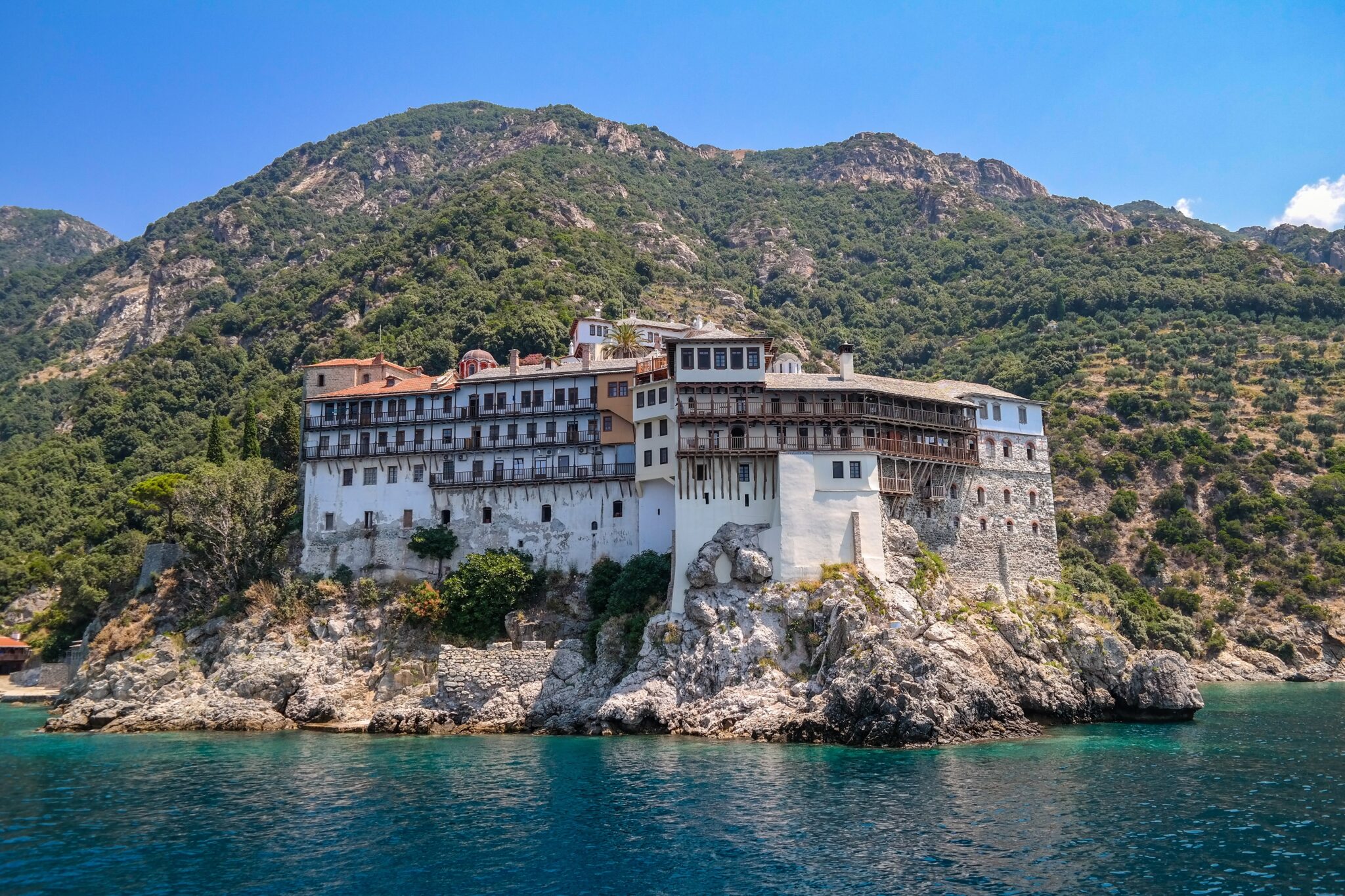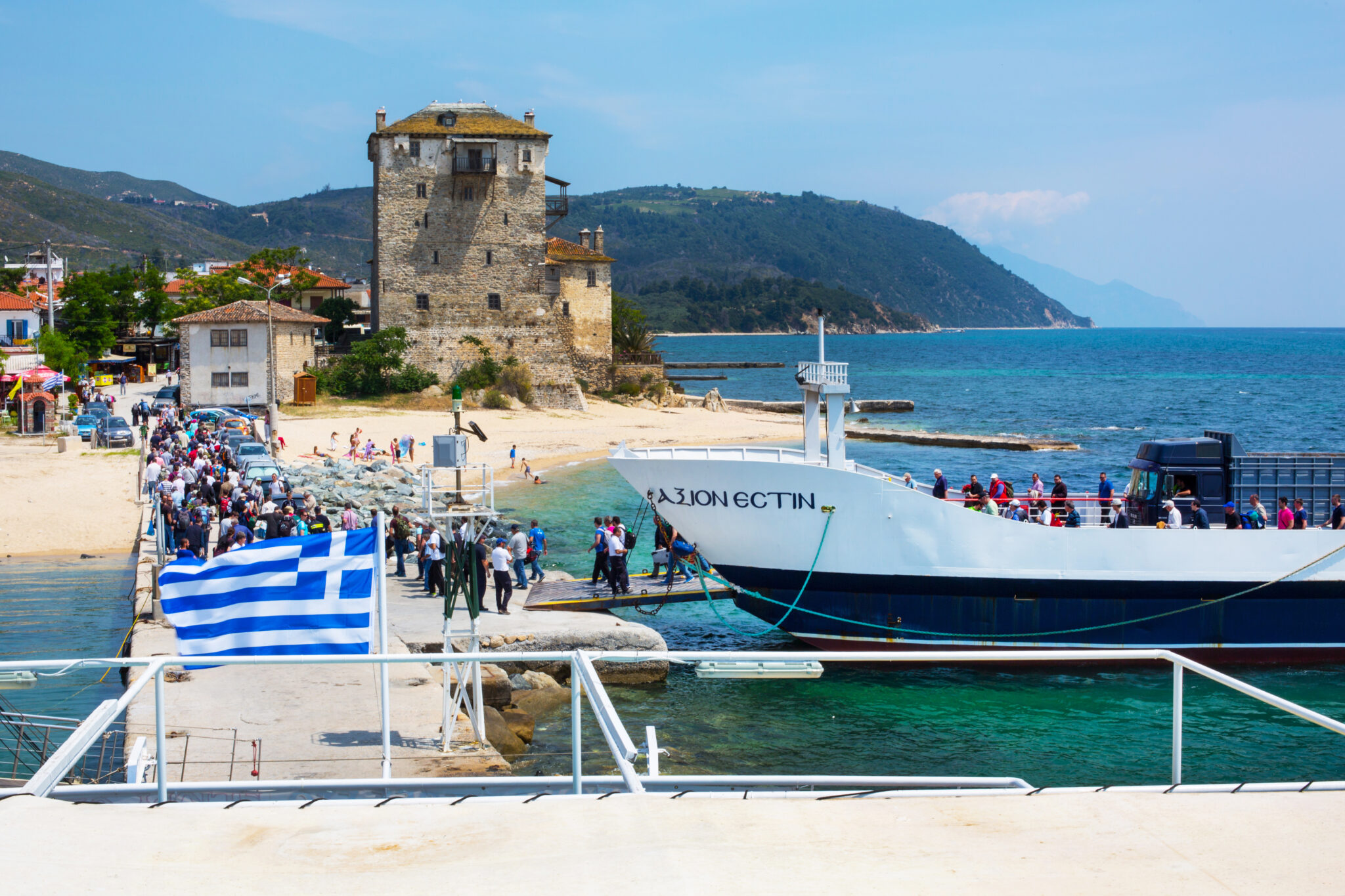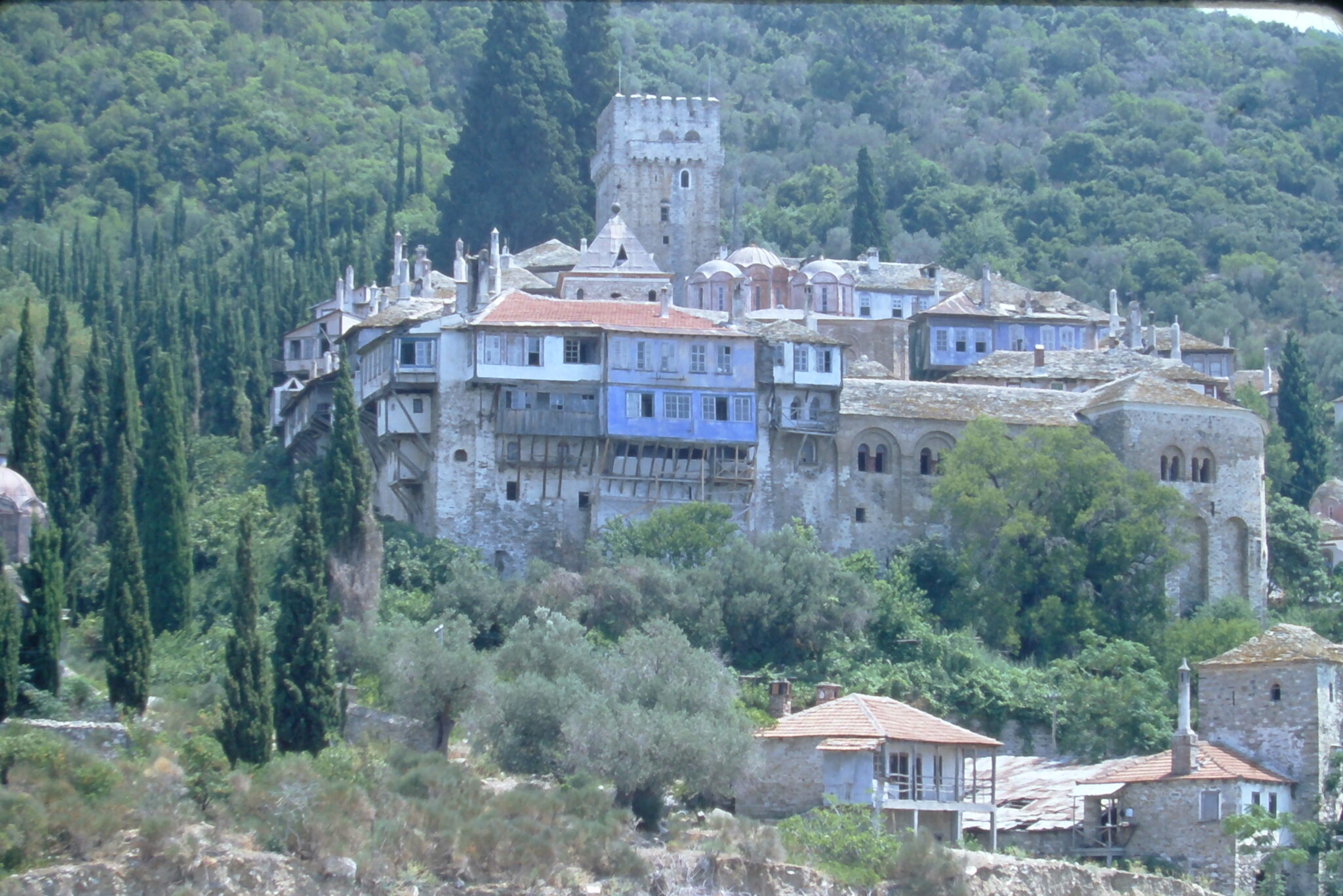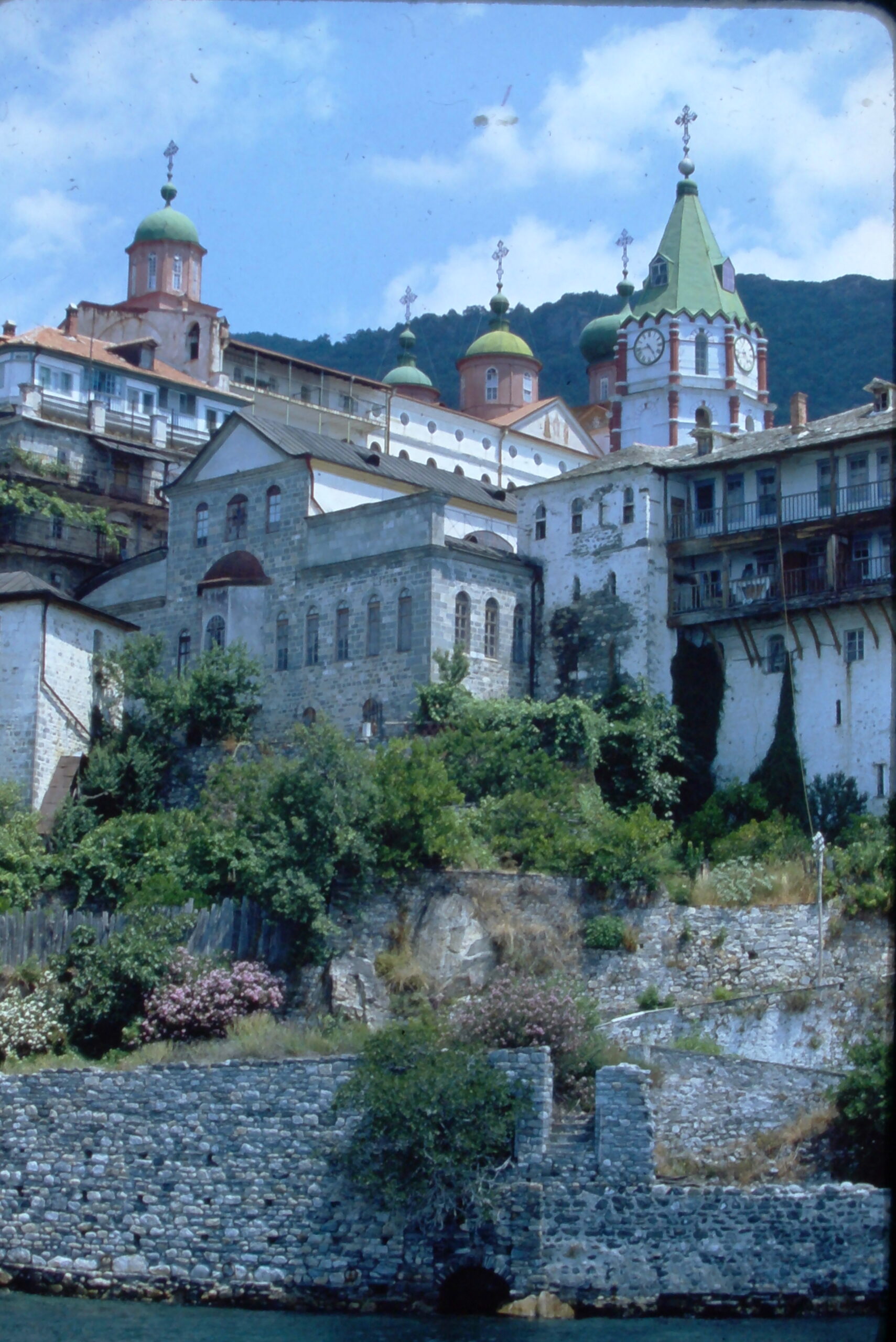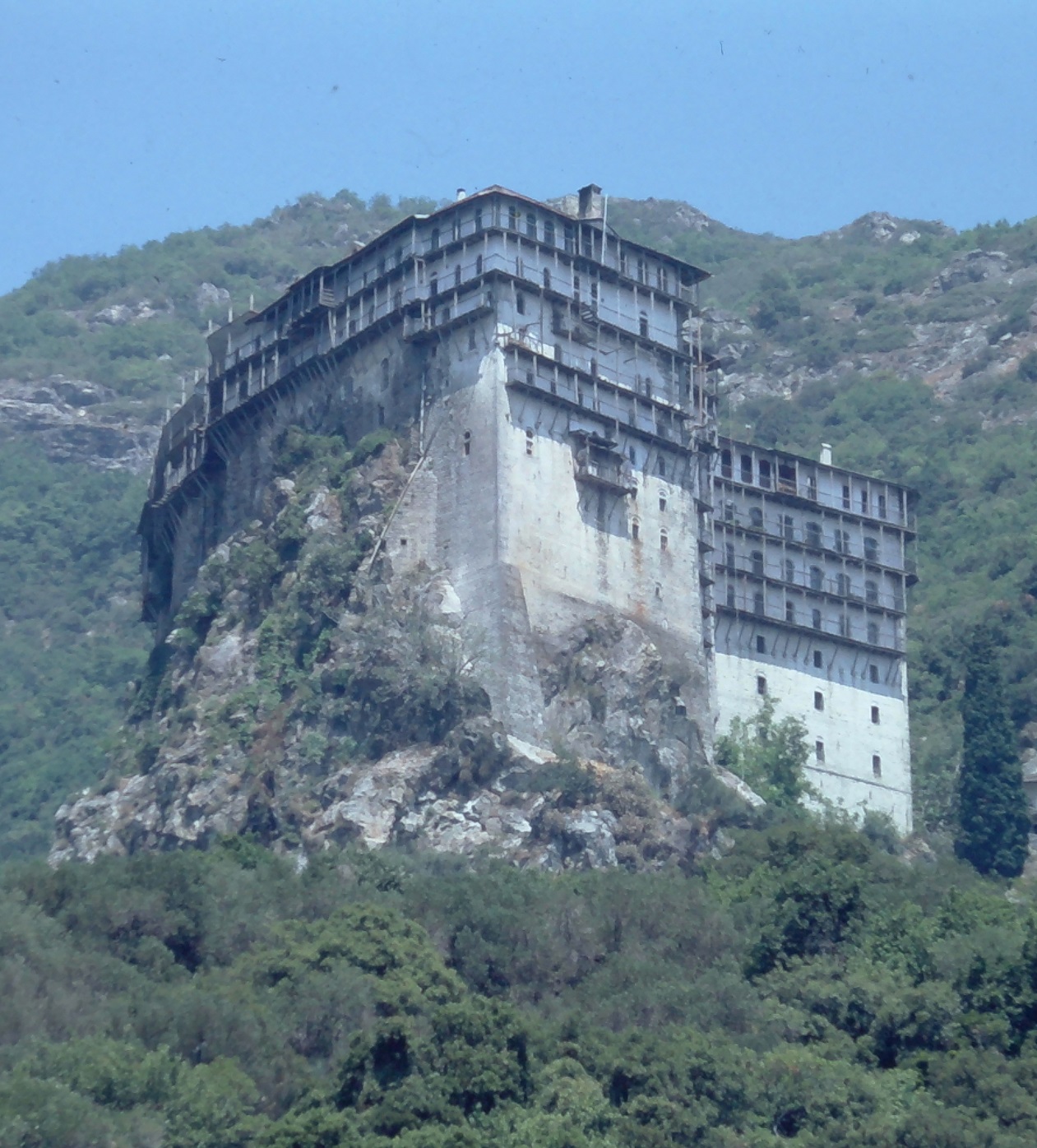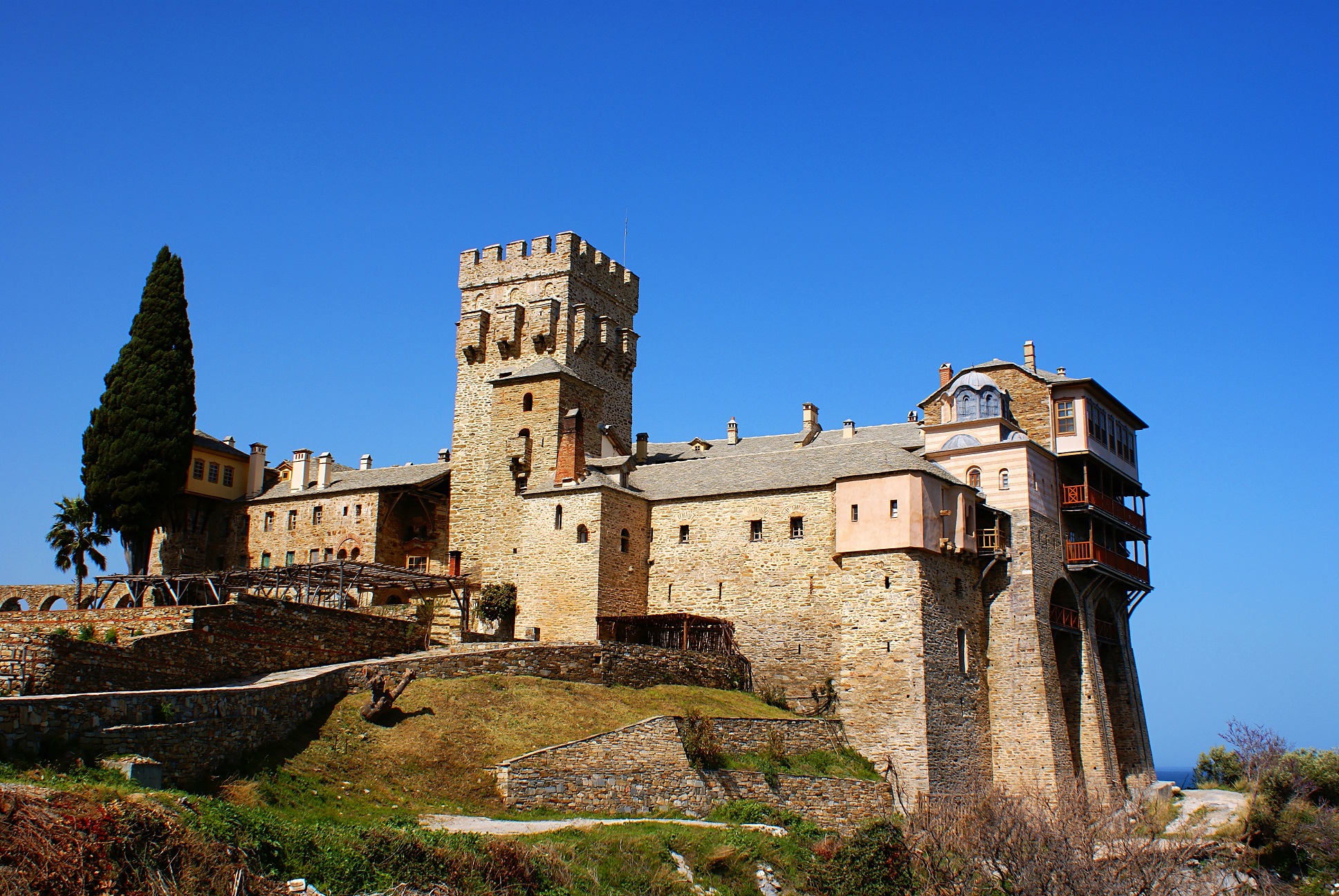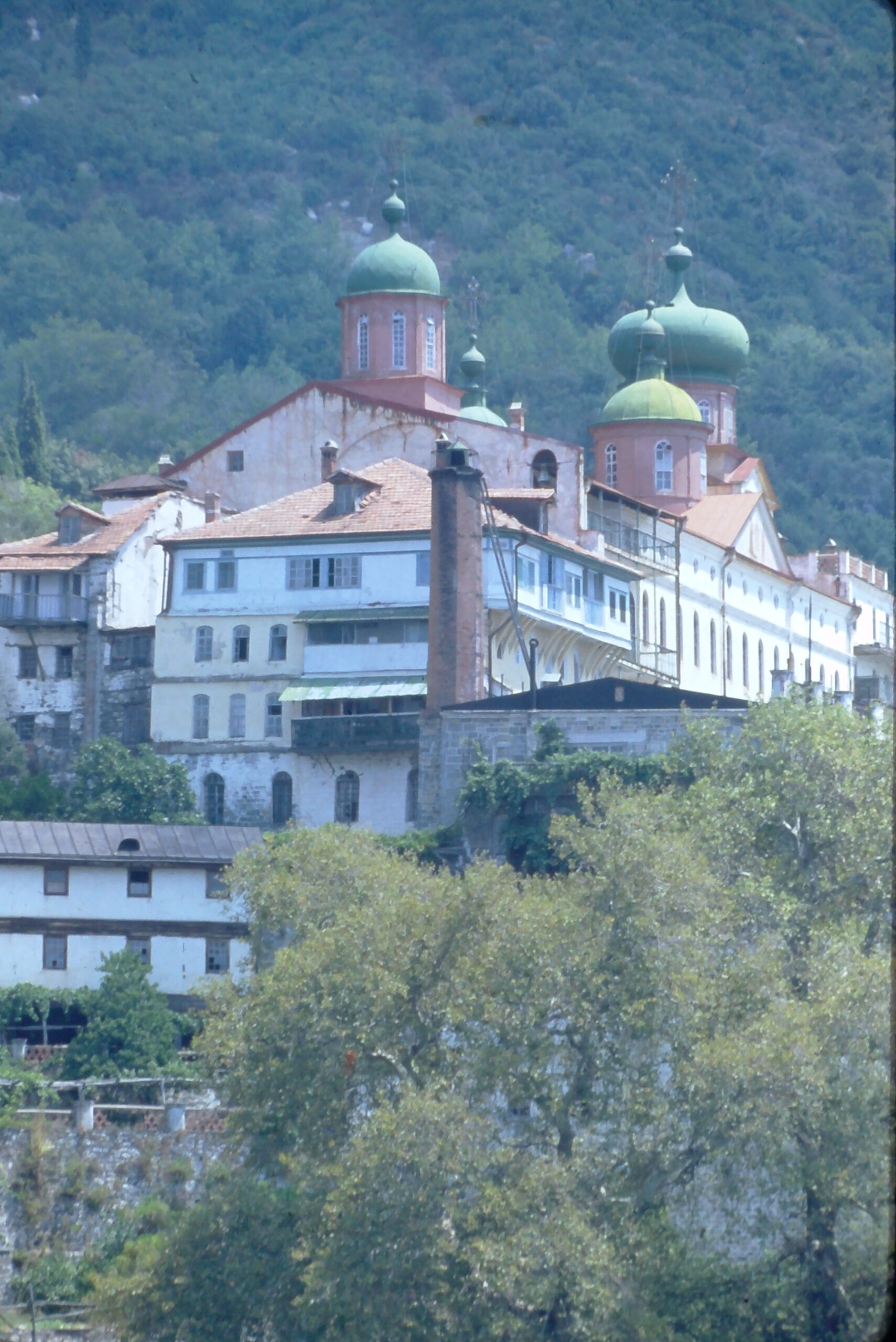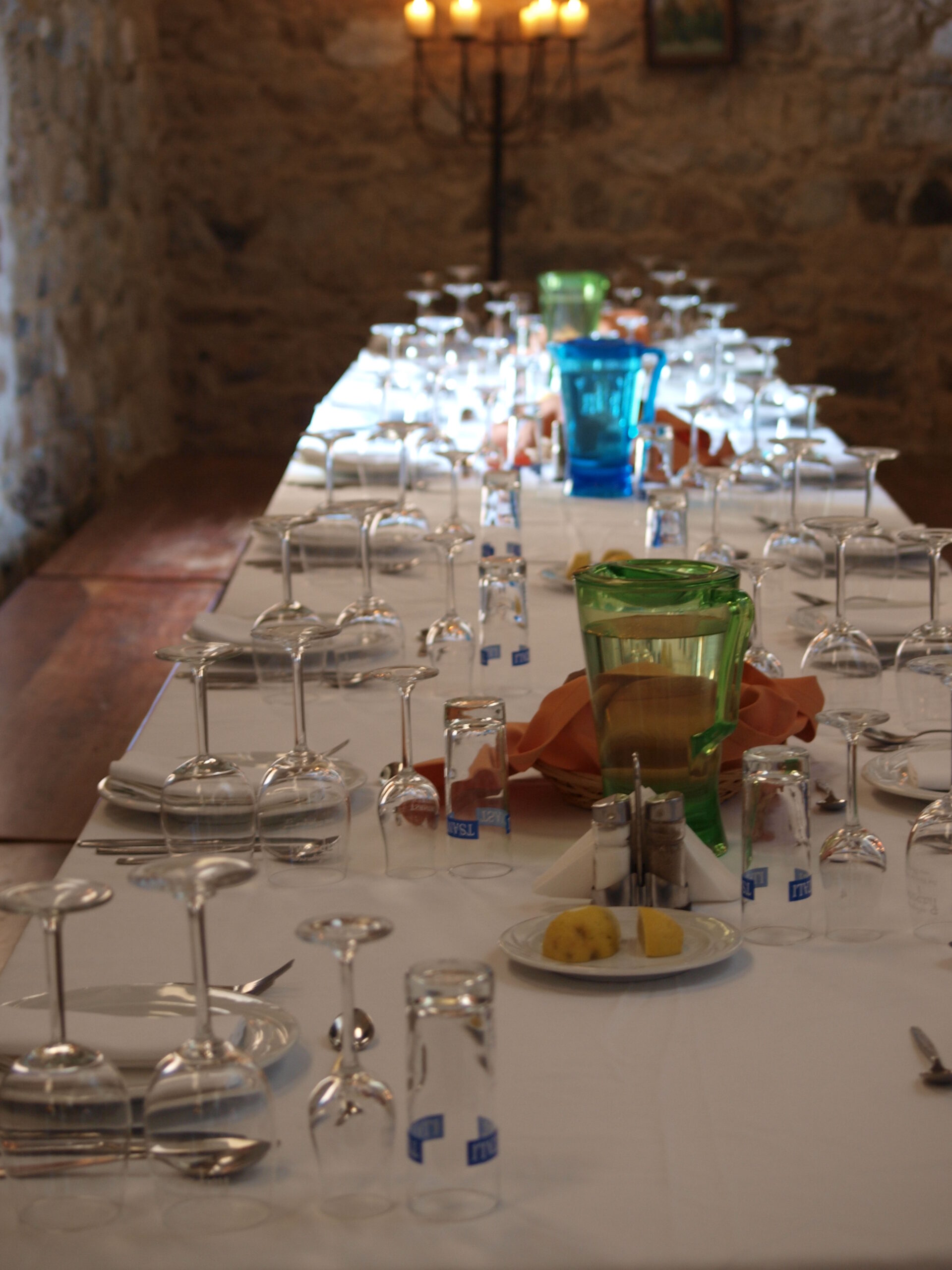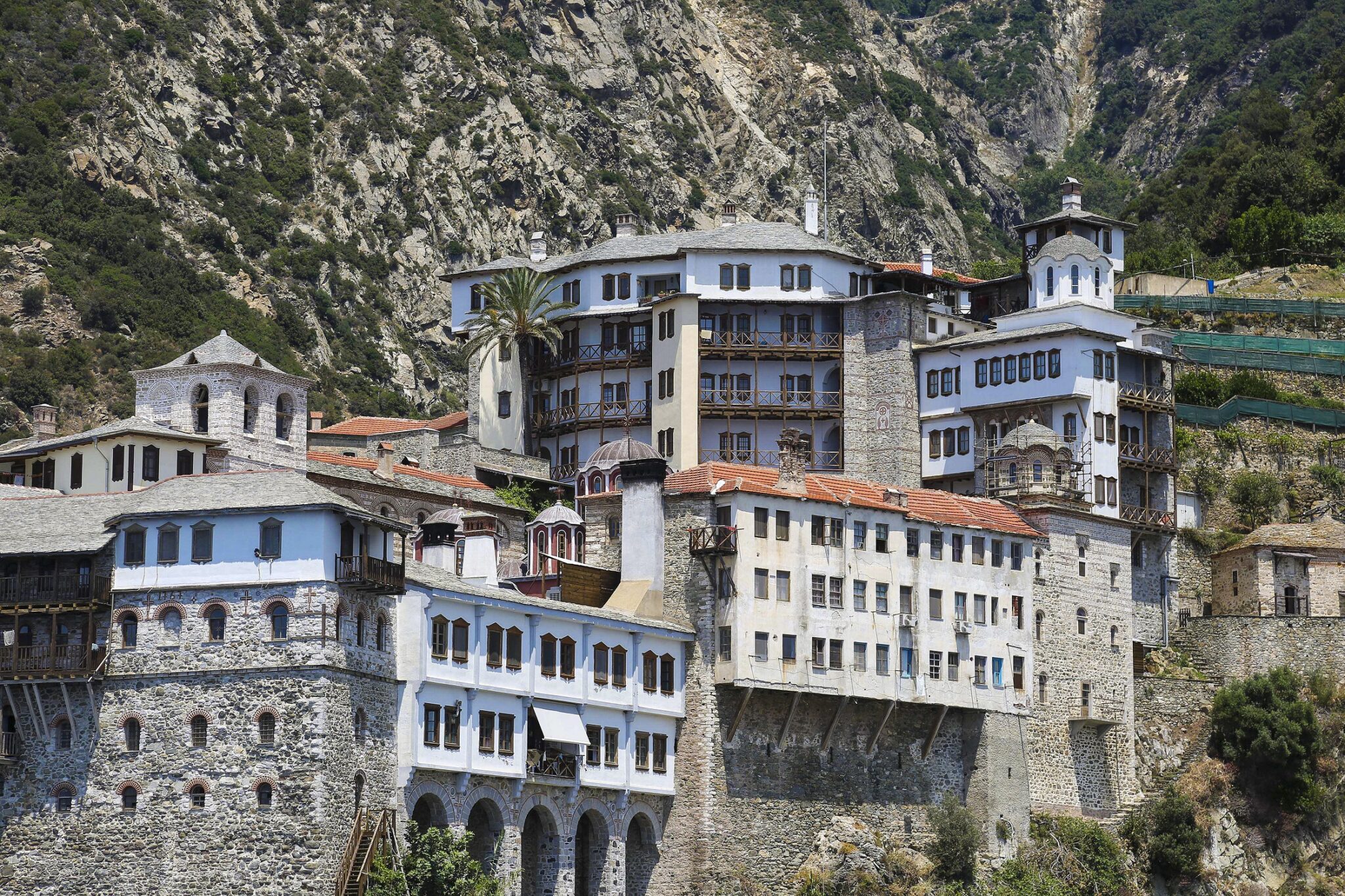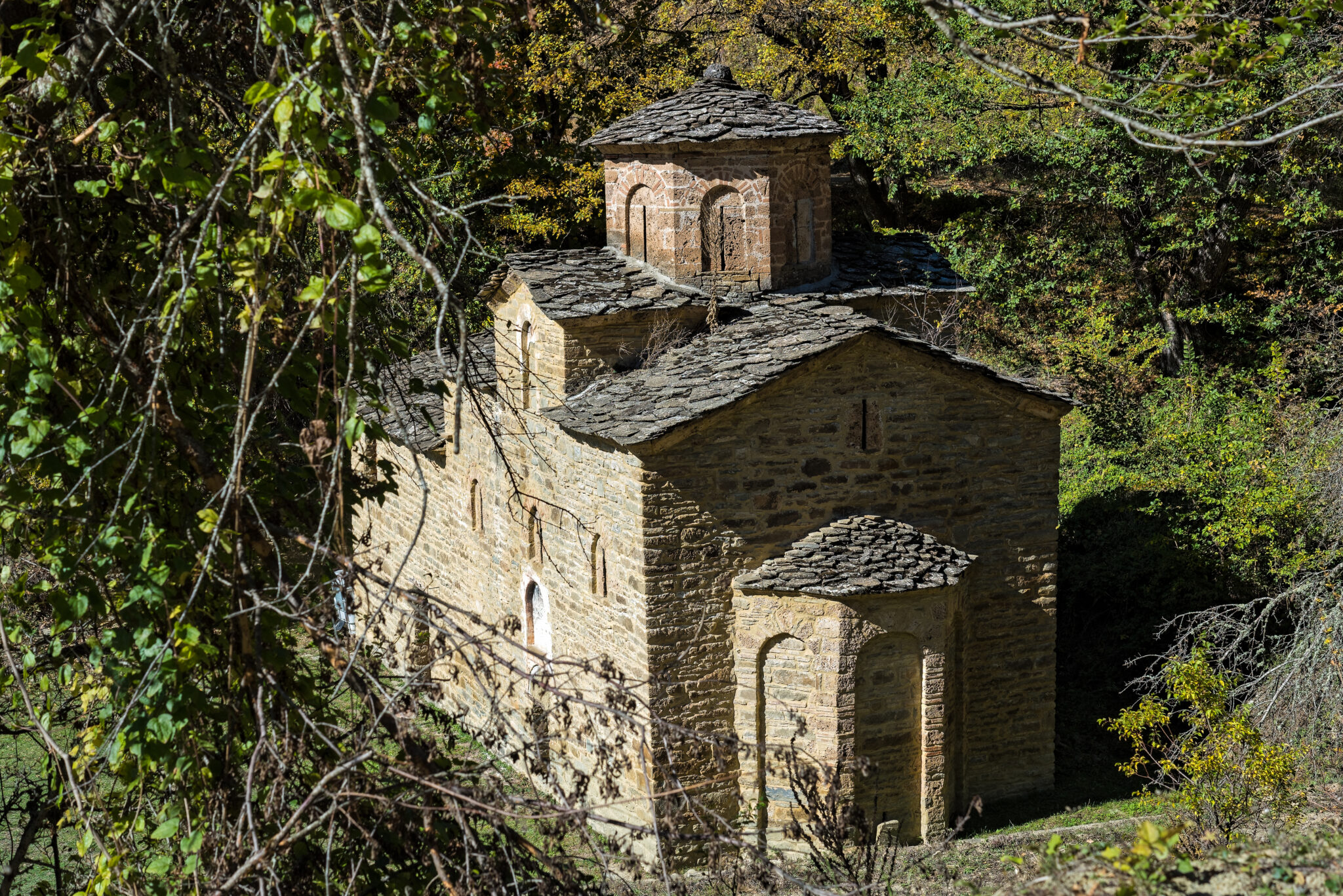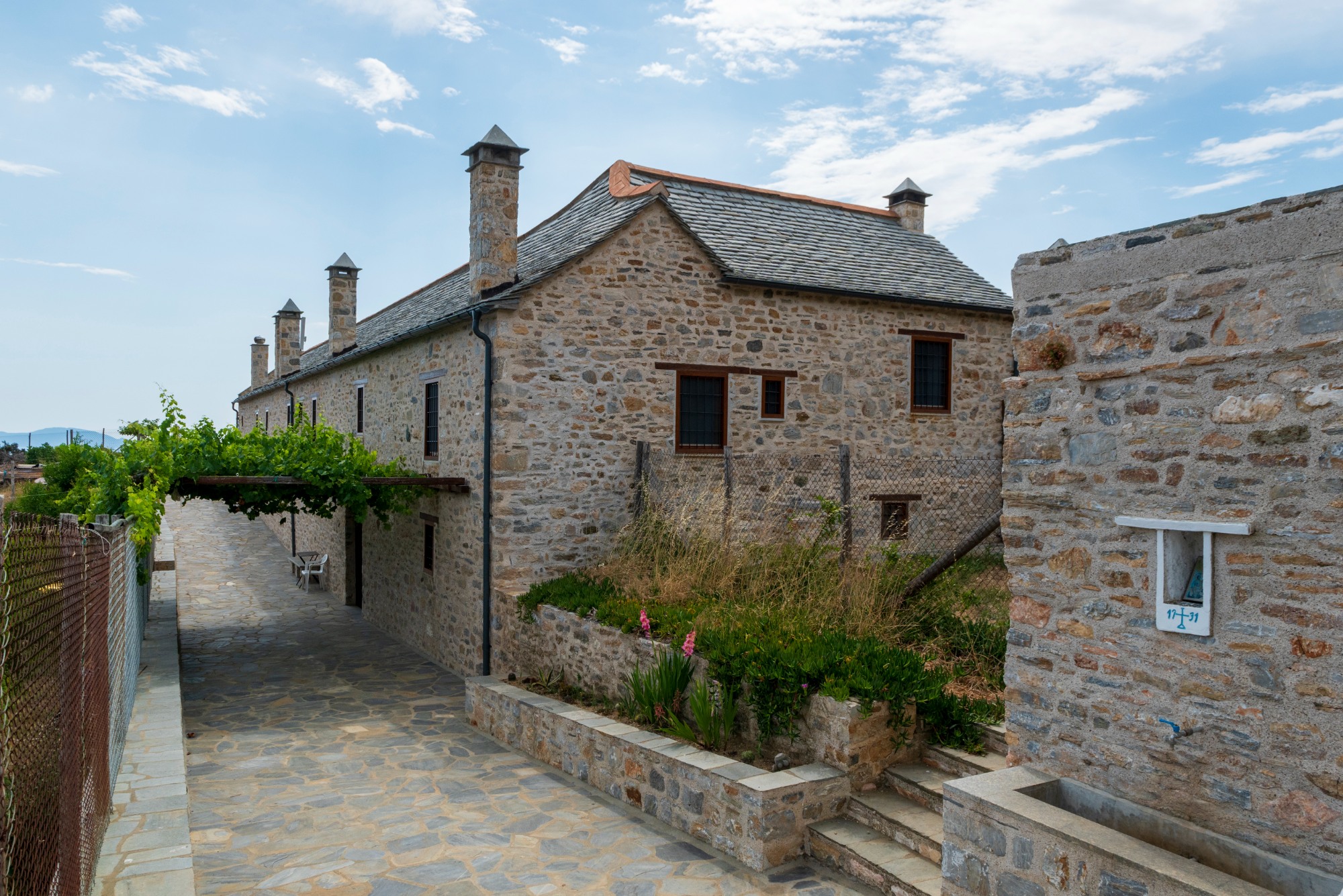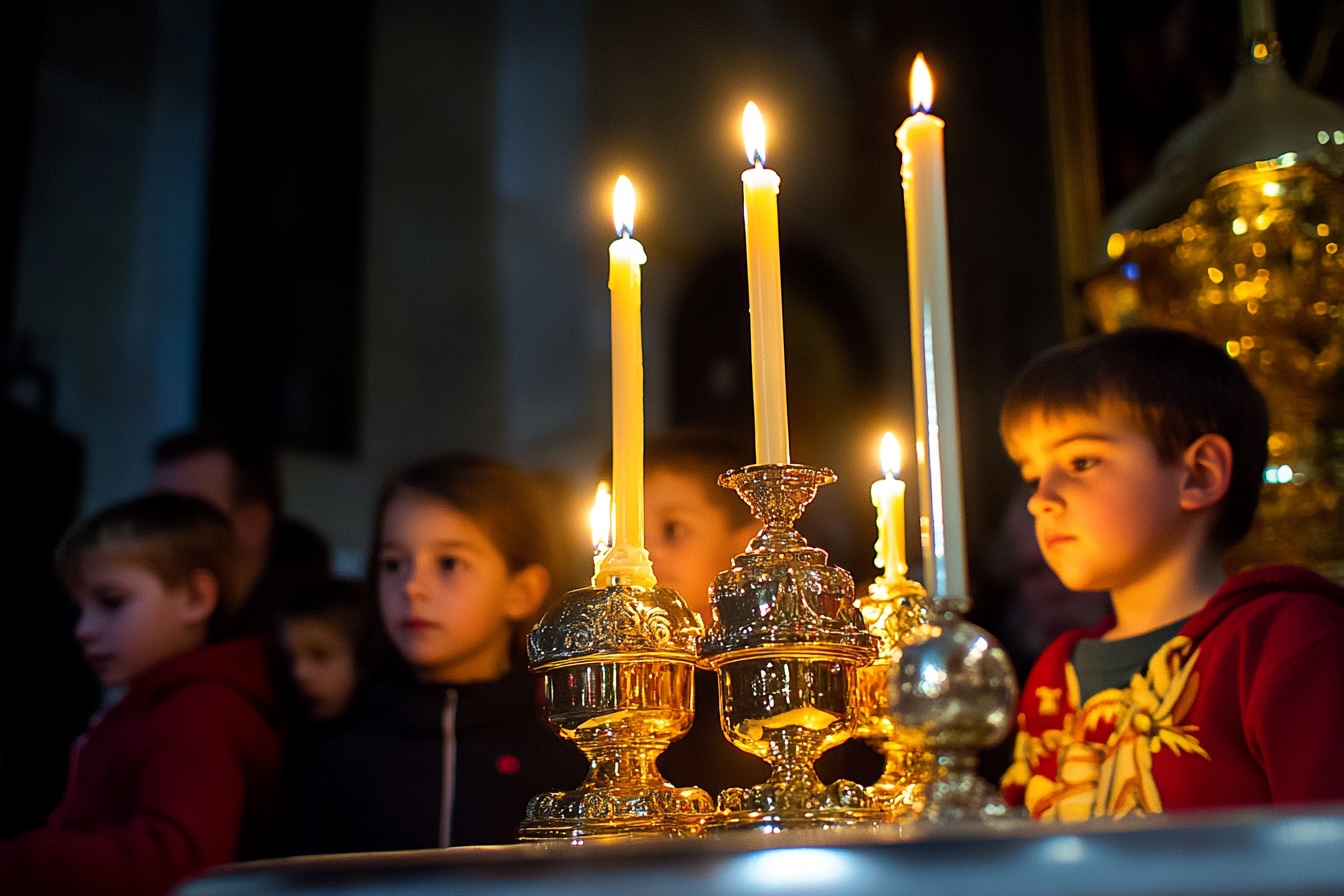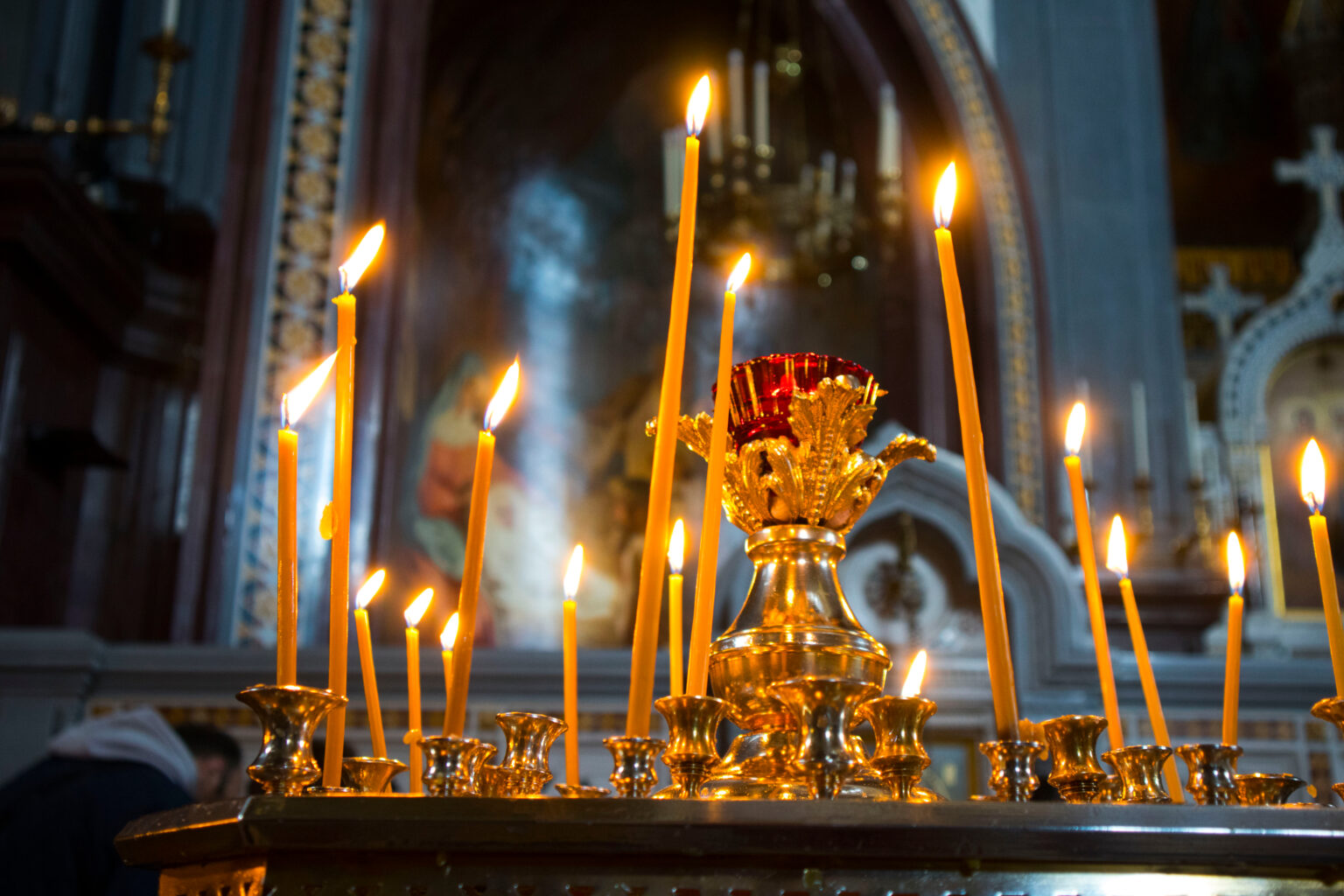Where time stops. Where feelings and illusions come alive. Where the divine meets the secular world. A very special world. A separate world. An abaton; the “Garden of Virgin Mary” since according to legend, Jesus gave this stunning piece of land to his mother.
The natural beauty is truly breath-taking. Unspoilt nature, idyllic, with lush vegetation, shady paths and bodies of water. And monasteries and hermitages scattered around, painting the picture of Mount Athos, while the black figures of the monks complete this unique throughout the world scene. The top of Mount Athos, covered in snow almost all year long, can be seen from wherever you are, adding another “divine” touch.
The trip starts in Ouranoupolis, with three friends who decided to live like hermits and get to know the beauty of life in this holy place, after a short stop at the medieval tower, a landmark of Ouranoupolis, waiting for the diamonitirio – the permit to travel to Mount Athos. There we met the monks for the first time, and also other civilians who were waiting to board the boat. Then, we walked along the foothills of the sacred mountain, with the small monastery ports and the seafront hermitages appearing in front of us.
The boat arrives in Dafni, the port of disembarking. Here we go our separate ways, towards many different monasteries: that of Simonopetra, Gregoriou, Dionysiou, Megiste Lavra, Docheiariou, Xiropotamou, Iviron and many more, and a unique, totally different world, lonely and filled with companionship at the same time, reveals itself.
The moment you disembark and see the boat leave the pier; you feel cut off from secular life. There are different laws here, different habits, different rules, ascetic, even sacred. Our first stop with the bus is Karies and it momentarily feels like going back to familiar settings, since Mount Athos’ administration is based here, as is the police, the telecommunications company, the post office, restaurants, hotels, grocery stores, shops selling rosaries, bookshops, a tailor’s shop, a painter’s workshop and a few, historic now, monk cells. The oldest church in Mount Athos, the Protato, is located in Karies, home to the celebrated paintings of Emanouil Panselinos. This is the church where the miraculous icons of “Axion Esti” and “Antifonitos” are kept. We bought all the necessary provisions here, mostly food, as we knew that following the monastery schedule is not always easy.
Breakfast is served at daybreak, that is, at about 6 o’clock in the morning, lunch is served at 11 o’clock in the morning, and dinner at 6 o’clock in the afternoon, while the monastery doors open at sunrise and close at sunset and they don’t open during the night no matter what. So, we tried to be prepared for at least morning or midnight cravings, and we brought snacks with us.
The first monastery we visited was the Koutloumousiou one, very close to Karies, accessible on foot, on a path. It was early in the afternoon when we arrived, and received the typical welcome of cold water, loukoumi (Turkish delight), and a chat with the Arhontaris, the monk in charge of hospitality.
After treating us, he led us to the dormitories we would be staying in, rooms for 5, 8 or 10 people with shared toilets and one shower. The beds were already made, and the sheets appeared clean. We attended vespers, and immediately after we sat to dinner. We were led to the dining hall where we were seated at large monastery tables with the food already served: green beans, feta, homemade bread and wine.
During the meal, some specific monks pray. When the prayer ends, the dinner ends too, it lasts about twenty to thirty minutes. We then went to the monastery courtyard to enjoy the peace and quiet. These evening moments proved to be some of the best of the whole trip. Pure magic.
We went to bed early and, even though we were tired from the trip, it was hard to fall asleep, so we stayed up late chatting.
The next day we headed towards the Iviron monastery, a stunning monastery built like a fortress, like many on Mount Athos, with an impressive inviting courtyard. The icon of Panagia Portaitissa, kept here, is very famous. We arrived early and spent almost the whole day, enjoying the company of the monks, and, in the afternoon, decided to follow the very beautiful path that leads to the Stavronikita monastery by the sea. The monastery has a gorgeous courtyard and narrow alleys.
The next monastery we visited was Panteleimon monastery, also known as the Russian monastery, one of the most impressive monasteries on Mount Athos. At the centre of the courtyard, there’s the Catholicon, consisting of 8 domes coated in green lead, that showcase the Russian legacy of the monastery. The wealth inside the monastery is very impressive, and there are several gold details. We were lucky to come across the Russian bellringer, and we went up the bell tower with him, where he rang the second largest bell in the world for us. We had delicious goulash for dinner along with monastery’s great red wine. Speaking of wine, you can also visit the cellars of the Tsantali winery in Metohi, Hromitsa, next to the lake of the same name. It’s really worth a visit, and you can reach it from Ouranoupolis directly, on a special road.
The next part of our trip was on boat, to the nicest, most impressive and best organized monastery on Mount Athos, that of Simonos Petra. It is housed in an impressive structure, 300m above sea level, while five of the seven floors are basically hanging over the cliff. There are monks seated on the balconies, meditating or speaking with each other, adding a mysterious touch to the monastery.
Hospitality here is exemplary. The Arhontaris, sweet and polite father Haralambos, welcomed us upon arrival, and offered us cold water and loukoumia. We sat with him on the sixth floor of the monastery, with the snowy top of mount Athos in the background. We asked to sleep on the seventh floor, where the view is breath-taking. The endless blue in front of you, together with the mountain view to your left are truly unforgettable.
Another thing we’ll never forget is attending Orthros, after Father Haralambos woke us up at 4am and we went down a winding stair carved in the rock, lit with burning torches. Monks clad in black went down the stairs with us, chanting psalms we were not able to distinguish. We arrived at one of the lower floors, at a chapel also carved in the rock. The monks formed, with their bodies, the altar and started mass, it was the most splendid, and perhaps most pagan, mass we’ve attended.
Another unique experience we had at the Simonos Petra monastery was when, just before sunset, both monks and visitors got out at the back and walked around the gorgeous and covered in thick vegetation slope. The setting, the almost complete silence, the impressive serenity, make you feel like this is the only place you could ever get in touch with the divine.
After two magical days, we decided to follow the path that links the Simonos Petra monastery with the Gregoriou monastery and the Agios Dionysios monastery, a charming seafront trail, at times right next to the sea, at others a bit higher up, on vertical rocks. The Agios Dionysios monastery is very impressive and resembles a castle, perched on the rocks over the sea.
We couldn’t skip visiting the Megiste Lavra (Great Lavra) monastery, the oldest and largest monastery on Mount Athos. The complex consists of a huge courtyard and over 15 chapels and includes various priceless imperial jewels and crowns, sacred relics, bibles and rare, thousands of years old, manuscripts, making it very unique. However, due to its size, one doesn’t receive such a warm and cosy welcome.
A bit of history
A peninsula with 20 monasteries and a 1000-year-old history, has been one of the main spiritual centres of the Orthodox faith. Since 1988, it’s been included on the UNESCO World Heritage Monument list.
Already since the early Byzantine years, monks from all over the empire chose this place to be where they would spend their lives in caves, away from secular life. Later, forming groups, they built the first monasteries to pass the test of time, surviving to this day, in a separate state with its own rules.
Each monastery has the so-called “dependencies” that is the sketes (small settlements), the cells (small pieces of land for a maximum of 6 monks) and the kathismata (individual buildings for monks).
The monasteries follow a communal way of life, while the sketes, the cells and the kathismata following a more relaxed life, that helps with hospitality.
No one will make you follow a particular schedule on Mount Athos, however, no matter the reason of your visit, Mount Athos will manage to make you adjust to its rhythm. In the end, you adjust and become part of the environment, peacefully coexisting and participating in the calm and spirituality of the place.
The provisions
You’ll need:
- A diamonitirio. You’ll have to make arrangements months ahead, and you’ll pick it up from Mount Athos’ offices in Ouranoupolis when you arrive. It costs €15 but its free for members of the clergy, the destitute, members of large families, students and members of the military.
- A backpack and hiking shoes.
- A set of sheets is optional, as they are provided by the monasteries.
- A reusable water bottle or thermos.
- A torch for night-time hiking.
- Snacks, mainly for in-between meals.
- A pair of binoculars to look at the monasteries in the distance, as well as at the monachus-monachus seals (Mediterranean monk seal)
- A swiss-knife is always useful.
- A sleeping bag in case you get left outside of the monastery one night.
- If you visit in the summer, make sure you also pack a long-sleeved shirt as it gets chilly at night, and because some monasteries don’t allow short sleeves.
Flavour
Even the meals are frugal, we were surprised by the taste of the food, the delicacies and the wine on Mount Athos. The loukoumia and the tsipouro we were offered as a welcome at the monasteries were amazing. The bread, homemade daily, the olives and the tea made breakfast healthy and unforgettable.
The dishes we had for lunch or dinner included cod, aubergines with rice and herbs, stuffed tomatoes, bean soup, goulash at the Russian monastery, octopus with macaroni in tomato sauce, cuttlefish stew. Almost every meal is served with the wine the monks make.
Departure
You never really leave Mount Athos; you carry it inside you, no matter the reason of your visit. The devout atmosphere, the reflection, the refreshing force, the introspection, and even the diversity of people you’ll meet here will leave their mark on you. Here, you’ll be able to forget or remember, to regret or receive validation, to get lost or be found, to meet with or isolate from. Here the divine meets the secular, and you promise not to leave, but to return.
Read also:
Naoussa: One of the most interesting travel destinations in the attractive central Macedonia
Leros: Guide for an unforgettable trip to this island of the Dodecanese
Road trip to the Fokida region’s south: Mythical Delphi, superb beaches, classy Galaxidi



